Pelargonium: characteristics, varieties, cultivation

The flower of extraordinary beauty, which in many Russian families grow on the windows, is mistakenly called geranium, but in fact it is pelargonium. This plant is widely used in indoor gardening and landscaping due to its decorative appearance, unpretentiousness and ability to grow and develop in a wide variety of conditions.

Description
The confusion with the names - geranium or pelargonium, happened due to the fact that when in the 17th century the famous botanist from Holland Johannes Burman decided to separate each of these cultures into a separate genus, it turned out that another famous scientist of that time, Karl Linnaeus, had already presented his own classification , in which he combined both of these plants into one category. Pelargonium at that time was widely popular in the arrangement of Victorian gardens and it so happened that the people began to call it geranium.


For quite a long time, the plant was considered an exclusively aristocratic flower - noble nobles decorated their homes with it, owners of luxurious cottages and villas grew it in their greenhouses. In America and European countries, this plant has been popular for more than one century.
The history of pelargonium in our country has gone through several stages - this is both a surge of universal love and complete oblivion. Surely our mothers and grandmothers remember the times when pelargonium began to be called “bourgeois flower” or “rose for the poor” - it was at that time that it became unfashionable. Fortunately, not so long ago, flower growers remembered these undeservedly forgotten luxurious flowers, and lovers of pelargoniums again appeared among Russians.
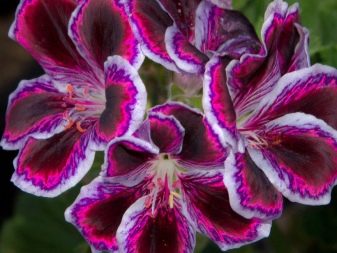

This houseplant is a perennial shrub with strong herbaceous and rather fleshy shoots. Depending on the variety, erect and creeping varieties can be found. A characteristic feature of pelargonium is rapid growth, in just a year a plant can grow by 25-30 cm, on average reaching 60-85 cm in height. The leaves are alternately arranged, petiolate. The outer side of the leaf blade is most often pubescent, but it can be glossy and usually green in color, although varieties with variegated colors are found. The shape of the petal is, as a rule, rounded, heart-shaped; radial textured veins are clearly visible on its surface.
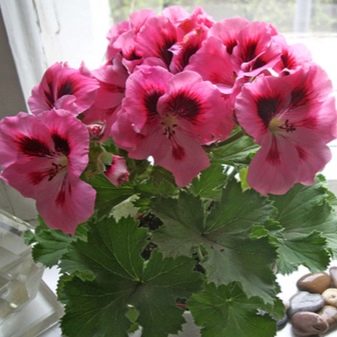

When creating comfortable living conditions, pelargonium can bloom all year round, but this usually occurs between April and October. Long peduncles are formed in the leaf axils and bear an umbellate spherical inflorescence, consisting of a large number of miniature flowers located on shortened pedicels rather close to each other. The petals are painted in snow-white, pinkish and scarlet shades, the corolla consists of 5 petals, differing in size.


The main similarity between pelargonium and geranium is that both cultures belong to the geranium family and therefore have some external similarity. The seed pods in both plants resemble a crane's beak; the stems of both plants are erect in most cases. Covered with a large number of whitish hairs, leaf plates are arranged alternately. Geranium, like pelargonium, has a pungent and rather specific smell, is distinguished by the brightness of colors and has medicinal properties.Both crops are unpretentious, fairly easy to grow and easy to propagate.


However, these are different plants, and confirmation of this is the fact that no one has yet been able to cross them with each other - this directly indicates the difference in genetic characteristics. The homeland of pelargonium is the African savannah. Geranium also comes from warm places, but in the process of its spread throughout the world, the culture was able to adapt to the most unfavorable natural and climatic conditions., which is why it grows in the wild, and in gardens it can bloom until the first frost. Geranium is widely represented throughout Russia, with the exception of its northern regions and the Far East. Pelargonium is a thermophilic houseplant that prefers well-lit areas and does not tolerate drafts, heavy rains and gusts of wind.


Geranium flowers of perfectly regular shape include 5, less often 8 petals. In pelargonium, the shape of the petals is symmetrical - the pair of the upper ones are visually separated from the lower ones and are larger in size. In the first, the flowers are collected in a large inflorescence, in most varieties of geraniums, the flowers are single. The flowers also differ in the number of stamens - in geranium there are 10 of them, and in pelargonium - no more than 7, the rest are underdeveloped. The color palette of geraniums is very diverse, but most often they are blue, blue and purple tones. In Pelargonium, on the contrary, blue tones do not exist; in most varieties, flowering occurs with white, pale pink and red flowers.

Geraniums are widely grown in gardens, for this they are planted directly in the open ground. Pelargonium is bred for home gardening, and although some owners of summer cottages and private houses take it outside in the summer, nevertheless, it is placed there in a flowerpot or hanging pots, and shortly before the first frost the plant is brought back into the house.
Types and varieties
Pelargonium is presented in a large number of varieties and varieties. Let's dwell on the most popular ones.
- Fragrant - is a rather lush bush with small leaves and juicy, bright flowers. Pelargonium has a pleasant aroma of lime and mint; varieties with the smell of orange, apple and nutmeg are slightly less common. However, the flowers themselves are rather inconspicuous, and the leaf blades are flat and velvety. Aromatic oils used in perfumery and cooking are distinguished from them. But the leaves themselves are not eaten.


- Royal - a bush with a shortened stem, pointed green leaves and rather large flowers. This category of pelargonium was artificially bred by breeders back in the middle of the last century.


- "Angel" - This hybrid pelargonium is similar to the royal one, but with smaller leaves. The flowers resemble pansies.


- Ampelnaya - the plant is better known as ivy. It is characterized by ampelous growth and thickened stems. Flowers are simple, double, collected in a socket.


- Zonal - one of the most common varieties of pelargonium. It has a well-developed erect stem, the leaf plates are very originally colored - darker circles are expressed on them, which visually divide the leaf into several multi-colored zones, including a couple of different shades of green. Flowering can be double or simple. The flowers themselves are small, collected in spectacular umbrellas of red, snow-white or pale pink. It is this pelargonium that is popularly called geraniums.


- Tulip - the inflorescences of this plant resemble blossoming tulips with 7-9 delicate petals. This group is characterized by flowering knocked down into a bouquet. A novelty variety, bred at the end of the last century in Boston.


- Ivy - this is ampelous pelargonium with whips dropping down. The length of each reaches 1 meter. Such plants often decorate balconies, loggias and terraces, and in summer they are transplanted into flower beds as a ground cover crop.Sheet plates come in several forms. The surface of the leaf is usually smooth, unpleasant to the touch and rather rough. Their color palette varies from snow-white to wine and even black tones.


- Rosebudnaya Is a pretty interesting plant. Its flowers resemble small bouquets of unblown roses. At the moment, it is widely represented by a wide variety of variety series. Terry inflorescences.

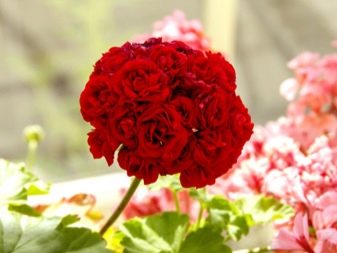
- "Lara Harmony" - a variety with very neat bushes, the flowering is light crimson, the flowers are beautiful, double, have a rather noticeable resemblance to roses. Each bush grows up to 50 cm, leaf plates are of a dull green color.


- "Passat" - pelargonium with velvety inflorescences of a pale pink color, the umbrella looks like a soft corrugated ball. This variety requires regular pruning in order to form a fluffy bush.


- "Ainsdale Duke" Is a powerful and vigorous plant, abundantly covered with green leaves with textured veins and white double flowers.


- "PAC Viva Rosita" - a very common plant, up to 20 flowers are formed on each shoot, the shade is crimson or pink.


- "Sarah Hunt" - undersized compact bush, light-colored leaf plates with a smooth overflow into pale orange. Inflorescences of the umbrella type.
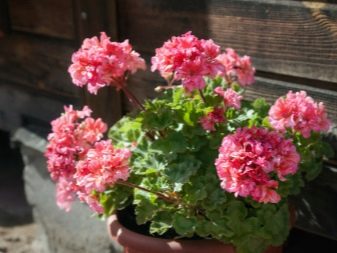

Planting and care at home
Taking care of pelargonium is not difficult at all. Taking care of your green pet will not take much time, and if you create comfortable conditions for it, the plant will delight you with its year-round flowering. The flower prefers lighted places; in the absence of sunlight, it loses its decorative effect. However, direct UV rays are detrimental to green leaves, so it is best to place flowers on eastern and western windowsills. If all windows face south, then additional shading will be required, for which a screen or reflective film is usually used.


On the north side, as well as in winter, additional lighting may be required with special phytolamps with a yellow glow spectrum. However, the usual fluorescent will do, but it must be located at a distance of 50-60 cm from the bush.
The optimum temperature for the growth and development of a culture is considered to be a level of 20-25 degrees. In hot weather, the flower can be taken out to the balcony or veranda, in the winter months it is preferable to keep it in cool conditions (12-16 degrees). This stimulates the formation of young flower buds. But the absence of a cold period of pelargonium will not hurt. Pelargonium is completely undemanding to the level of humidity in the room - it quickly adapts to the most common, typical for residential premises, although with the onset of the heating season, the tips of the sheets dry out. To prevent such an unpleasant phenomenon, you can periodically spray the crown from a spray bottle, while it is important to ensure that moisture does not collect in drops.
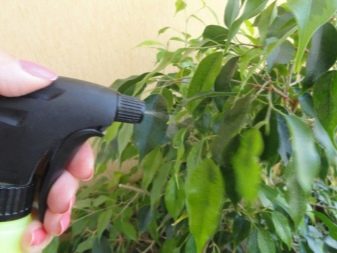

The plant prefers moderate, regular watering. In summer, irrigation is carried out twice a week as the top layer of the earthen coma dries up; in winter, the irrigation regime is left unchanged. The only exceptions are cases when the temperature in the room drops sharply. Keep in mind that pelargonium does not tolerate stagnant water and waterlogging of the soil - this causes rotting of its roots. As a result, the ground parts of the plant do not receive moisture and the required amount of nutrients, they begin to turn yellow and then fall off. In caring for a flower, it is always better to underfill than to overmoisten, this will not have a detrimental effect on the flower. The fact is that pelargonium tends to accumulate and retain moisture, therefore it can do without water for quite a long time.


Pelargonium responds very well to fresh air. The plant literally transforms before our eyes after airing, but it is better to avoid drafts, so do not put the flower near the vents and balcony doors.During the growing season, pelargonium requires fertilization. It is best to use ready-made store preparations in liquid form, and organics should not be used. In this phase, fertilizing is applied every two weeks, and with the onset of the resting phase, the frequency of fertilization is reduced to once a month.


For full flowering, the plant needs phosphorus and potassium. If you want to achieve continuous flowering, then you should use a fertilizer such as magnesium sulfate. This substance promotes enhanced budding. The drug is diluted at the rate of 5 g per 5 liters of warm water, which is poured over the flower. A young plant needs to be transplanted every year, and after 3 years of life, it is enough to do this once every 3-4 years. When transplanting, each new container should be 1-1.5 cm larger than the previous one. Do not take a too bulky container - in this case, the bush will not bloom.


It is advisable to transplant pelargonium in the spring. In the fall, work is carried out only when necessary - if the plant is sick or when roots begin to crawl out of the drainage hole.
For pelargoniums, ready-made soil is sold in every flower shop, but if you wish, you can make up the soil mixture yourself. To do this, mix leaf and sod soil with rotted compost and river sand in equal proportions. The plant is transplanted by the transshipment method. To do this, it is carefully removed from the old container along with an earthen lump (to make it easier to do, for a start it can be thoroughly moistened), and then moved to a new pot, filling all the voids with a new substrate.


Keep in mind that pelargonium requires good drainage to help remove excess moisture. To do this, expanded clay or large pebbles are poured onto the bottom of the container so that the layer is at least 1/4 of the total volume of the flowerpot. Indoor pelargoniums are pruned from time to time. This is necessary for more lush flowering and crown formation. Such manipulations are carried out at the end of February just before the beginning of the growing season. After such pruning, new buds and buds are actively formed for flowering, the growth of lateral shoots is stimulated.


Growing rules in the garden
In the summer, many gardeners take their pelargoniums out of the apartment to balconies, terraces or house plots. If you wish, you can plant them in open ground on a flower bed. Pelargonium is a fairly hardy plant., which greatly facilitates the process of its rooting and determines the high survival rate of the culture when planted in the ground. Transplanting is carried out in the spring after the threat of frost on the soil has completely passed and a stable high temperature is established at night and during the day. In central Russia, this period falls on the period from May to the first ten days of July, but if you plan to transfer a perennial in a container, this can be done much earlier.

Pelargonium belongs to light-loving crops, therefore it prefers well-lit areas, but so that the light is diffused. The most comfortable will be a light partial shade - only in these conditions will the plant develop and bloom evenly throughout the summer.
The land for pelargonium should be loose, very light, fertile with high levels of water and air permeability. It is optimal that the soil mixture contains sand, compost and peat. Try not to abuse the organic component - its excessive amount weakens the plant's resistance to diseases and reduces its decorative effect. Clay, like loamy soil, is unsuitable for planting pelargonium, the reaction should be slightly acidic or neutral.


Before planting, it is important to properly prepare the ground - the site is dug to a depth of 25-35 cm, all the roots of weeds are removed and the necessary mineral dressing is added with compost, after which it is leveled with a rake. It is best to do all this in advance, that is, in the fall before the snow falls. With the onset of heat, pelargoniums are transplanted - usually in increments of about 20 cm, the aisles are kept at about the same distance. If the pelargonium is large and branched, then the distance is chosen less. If you exhibit a flower in an outdoor flowerpot, then, on the contrary, the distance between seedlings can be reduced.


Pelargonium is dug in a couple of centimeters deeper than it was planted before in the container. Thanks to this simple agrotechnical technique, a young plant will be able to grow additional roots rather quickly. If the seedlings are elongated and thin, then they can be pinched a little before moving into the ground. In this case, the bush blooms a little later, but the plant will get stronger and adapt well to the new site.

Pelargonium on the street needs to be watered regularly, but moderately. Despite the fact that the plant can survive a short drought, it is better not to allow the land to dry out. The lack of a full-fledged irrigation regime quickly affects the external decorative state of the perennial - the leaves become sluggish, the inflorescences become smaller, and if the situation is not corrected, then they do not bloom at all.


Proper watering after transplanting is especially important, when the seedlings are only getting stronger in the ground. Watering should be root. The best way to do this is to use a watering can. A hose with a spray nozzle is not recommended. Garden pelargoniums tolerate temperatures well up to + 20-24 degrees.If the air warms up more, you need to organize it lightly shading in the hottest hours.
To maintain decorative flowering, a garden culture needs potash and phosphorus fertilizers. Phosphoric plants are best applied in spring, even before budding begins, when the shrub is just being formed, and potash plants are good at the stage of budding. Keep in mind that within one month after transplanting the bush, fertilizers do not need to be applied - during this period it needs rest for more successful adaptation to the changed habitat conditions.

Garden pelargonium should be protected from frost, but if we are talking about flowers in pots and flowerpots, then there will be no problems - you just need to bring the plant back into the room in the fall, and then place it in home pots. If the flower is in the open field, then it should be carefully dug up so as not to damage the root system, transplanted into a container and then also brought into a warm house.

Reproduction
Pelargoniums are propagated by seed and cuttings. In most cases, the first option is used by scientists for breeding new varieties, since it is more time-consuming and laborious. Specimens grown from shoots will delight with their bright flowering in a couple of months, and with seed reproduction, it will be possible to get decorative flowers no earlier than in 3.5-4 months. Let us dwell in more detail on the features of reproduction by each of these methods.

When propagated by seeds, the daughter plant does not always repeat all the features of the mother plant in terms of the color of the leaves. Seeds are usually purchased in specialized stores - getting them at home is quite problematic. The step-by-step sequence of actions is as follows.
Before planting, the seed must be scarified, that is, to break the integrity of the shell in order to facilitate its further germination. To do this, the seedlings are lightly rubbed between two plates of emery, and then soaked for two to three hours in warm water. If you neglect this stage, then the germination rate will be low. In some stores, seed material is sold in the form of pills - they do not require any preliminary preparation.

Seeds must be planted at the end of February - the first half of March in a container with a nutrient substrate consisting of peat and sand, taken in equal amounts. Growing in peat tablets is considered very effective. For better germination, experienced flower growers equip a so-called greenhouse - for this, the container is covered with film or glass, not forgetting to air it daily. Watering should be moderate, be sure to drip - using a spray bottle.


When creating a comfortable microclimate, the first shoots appear 2-3 weeks after planting. As soon as 3-5 permanent leaves appear on them, you can pick and plant the seedlings in a permanent place. As it grows over the 6th leaf, one more dive should be made, this will contribute to the growth of lateral branches and the formation of a lush, beautiful bush of pelargonium. With further transplanting into open ground, a couple of weeks before moving the plant, it is necessary to harden the plant - the containers are taken outside every day, gradually increasing the duration of their stay in the air. Seed propagation will allow you to grow a strong and healthy plant.

Among amateurs, propagation by cuttings is more often used, in this case the daughter bush completely repeats all the characteristic features of the parent.
Cuttings are apical shoots 6-10 cm in size with a pair of internodes. They are cut from young and healthy bushes so that the shoot can develop as fully as possible. It is advisable to make the cut oblique, after which the cutting is washed under running water so that the milky juice comes out completely, then dried and placed in a rooting substrate. It is more convenient to do this in water, since in this case it is possible to observe the process of root formation. To prevent rotting of the cutting, activated carbon must be added to the substrate. The water is renewed weekly. After the appearance of 6-8 full-fledged leaves, the apical growth point is pinched and the plant is moved to a permanent place.

Diseases and pests
Pelargoniums are often infected with fungal and bacterial infections. The most common are the following.
- Blackleg. As the name suggests, the main symptom of this disease is decay and darkening of the stem base. This is a very dangerous disease, which is a consequence of low air temperature, which leads to hypothermia of the roots and aerial parts of the plant. In this case, it is impossible to save pelargonium - the bush must certainly be destroyed along with the substrate. The container can be disinfected and reused.


- Gray mold. The disease manifests itself as a grayish bloom on the leaf plates and is usually accompanied by the appearance of spots on the stems. This happens when moisture stagnation forms as a result of excessive watering, lack of drainage, or the use of too heavy soil. If signs of infection are found, all damaged areas should be cut off, the plant should be transplanted into a new pot with a complete replacement of the substrate and treated with a fungicidal preparation.


- Rust of leaves. Grayish-brown spots appear on the leaves, which eventually transform into stripes. If the plant is not cured in time, the leaves will soon turn yellow and begin to fall off. This is a fungal disease, its cause is high humidity in the room and irregular watering. A diseased plant must be treated with preparations such as "Oxyhom" or "Abiga Peak" 2-3 times with an interval of 7-10 days. Keep in mind that biological products such as Fitosporin are powerless against rust.

- Powdery mildew. In this case, a noticeable whitish bloom appears on the leaf plates, which looks like mealy pebbles. You can remove them physically, but after a while they appear again, increase in size and change their shade to gray, and then to brown. At the same time, pelargonium begins to turn yellow and shed its leaves.Most likely, the flower is kept in conditions of high humidity and high temperature, another probable cause of this disease is overfeeding with nitrogen-containing fertilizers. To save the plant, you should spray it with milk, water or iodine solution.

In addition to disease, growers may face other problems in the cultivation of pelargonium.
- Yellowing and dropping of foliage indicates that the plant does not have enough water. Be sure to increase watering, remembering to loosen the ground after that.
- The leaves at the top become loose, damp, - on the contrary, this is a signal of too frequent watering of the flower. In such a situation, it is necessary to adjust the irrigation mode and be sure to drain all the withdrawn water from the sump.
- Reddening of the leaves - most likely there is a sharp drop in room temperature.
- The lower part of the trunk is exposed - this means that the plant is experiencing a lack of light. Be sure to move the pelargonium to a well-lit area or use a backlight if necessary.
- The lack of flowering indicates the presence of the flower in a high temperature environment. Despite the fact that pelargonium is thermophilic, it is dangerous to constantly be at an air temperature of about 30 degrees or more. Another factor in refusing to bloom can be too large a pot. In this case, the plant begins to direct all its forces to actively build up the root system and green mass, and it no longer has any energy left to plant flowers.


Pelargonium leaves have a rather specific aroma, so pests do not like this houseplant, but there are still insects that are not deterred by this smell, for example, spider mites and whiteflies. If parasites are found, you can use insecticides.
For information on how to properly care for pelargonium, see the next video.

























The comment was sent successfully.